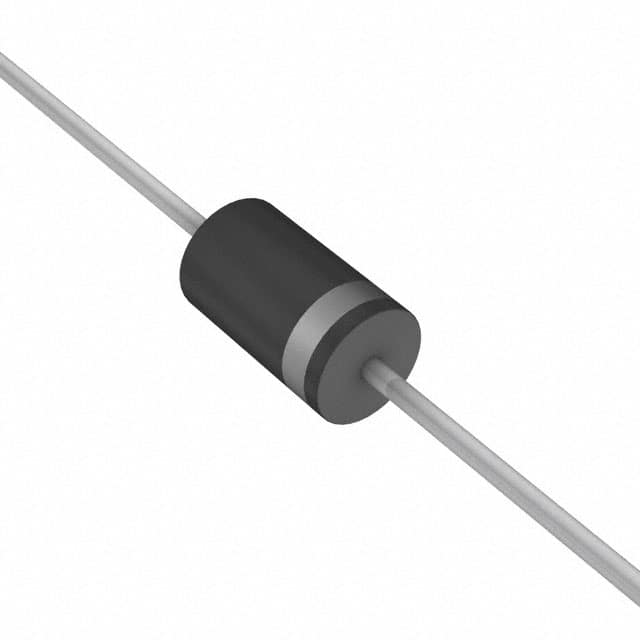1N5822 A0G
Product Overview
Category:
The 1N5822 A0G belongs to the category of Schottky diodes.
Use:
It is commonly used in rectifier and power supply applications.
Characteristics:
- Low forward voltage drop
- High current capability
- Fast switching speed
Package:
The 1N5822 A0G is typically available in a DO-201AD package.
Essence:
This diode is essential for converting alternating current (AC) to direct current (DC) in various electronic circuits.
Packaging/Quantity:
It is usually packaged in reels or tubes, with quantities varying based on manufacturer specifications.
Specifications
- Maximum Average Forward Current: 3A
- Maximum Reverse Voltage: 40V
- Forward Voltage Drop: 0.45V at 3A
- Operating Temperature Range: -65°C to +125°C
Detailed Pin Configuration
The 1N5822 A0G has two pins, anode and cathode, which are identified by the marking on the diode body.
Functional Features
- Low power loss
- High efficiency
- Suitable for high frequency applications
Advantages
- Fast switching speed
- Low forward voltage drop
- High current capability
Disadvantages
- Limited reverse voltage capability compared to other diode types
- Sensitive to temperature variations
Working Principles
The 1N5822 A0G operates based on the Schottky barrier principle, where the metal-semiconductor junction allows for faster switching and lower forward voltage drop compared to standard PN-junction diodes.
Detailed Application Field Plans
Power Supplies:
Used in various power supply designs due to its low forward voltage drop and high current capability.
Rectifiers:
Commonly employed as rectifiers in AC to DC conversion circuits due to its fast switching speed.
Voltage Clamping:
Utilized for voltage clamping applications in electronic circuits to protect sensitive components from overvoltage conditions.
Detailed and Complete Alternative Models
- 1N5817
- 1N5819
- SS34
- SS36
In conclusion, the 1N5822 A0G Schottky diode is a crucial component in electronic circuits, offering fast switching speed, low forward voltage drop, and high current capability. Its applications span across power supplies, rectifiers, and voltage clamping circuits, making it an indispensable part of modern electronics.
Word count: 366
Lista 10 Vanliga frågor och svar relaterade till tillämpningen av 1N5822 A0G i tekniska lösningar
What is the maximum forward voltage drop of 1N5822 A0G?
- The maximum forward voltage drop of 1N5822 A0G is typically around 0.5V at a forward current of 3A.
What is the maximum reverse voltage rating of 1N5822 A0G?
- The maximum reverse voltage rating of 1N5822 A0G is 40V.
What is the maximum forward current rating of 1N5822 A0G?
- The maximum forward current rating of 1N5822 A0G is 3A.
What are the typical applications of 1N5822 A0G diode?
- 1N5822 A0G diodes are commonly used in power supplies, voltage regulators, and DC-DC converters.
What is the package type of 1N5822 A0G?
- 1N5822 A0G diodes are typically available in a DO-201AD (DO-27) package.
What is the junction temperature range for 1N5822 A0G?
- The junction temperature range for 1N5822 A0G is -65°C to +175°C.
Can 1N5822 A0G be used for reverse polarity protection?
- Yes, 1N5822 A0G diodes can be used for reverse polarity protection due to their low forward voltage drop and high reverse voltage rating.
What are the key differences between 1N5822 A0G and other similar diodes?
- Compared to standard silicon diodes, 1N5822 A0G diodes offer lower forward voltage drop and higher current capability, making them suitable for high-power applications.
Are there any specific layout considerations when using 1N5822 A0G in a circuit?
- It's important to minimize the length of the traces connecting the diode to other components to reduce parasitic inductance and ensure proper heat dissipation.
What are the potential failure modes of 1N5822 A0G diodes?
- Common failure modes include thermal runaway due to excessive current, reverse voltage breakdown, and mechanical damage from improper handling during assembly.


